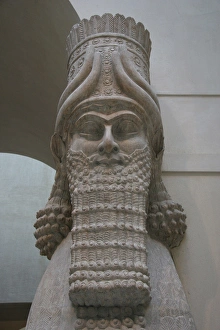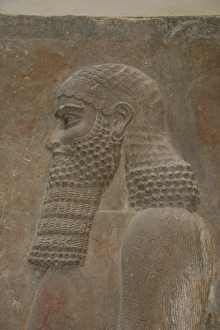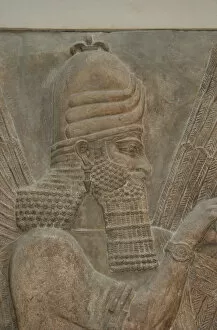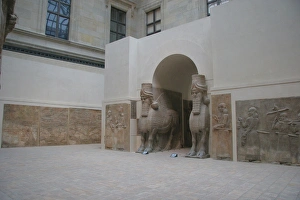Sargon Collection
"Sargon: The Mighty King of Ancient Assyria" Step into the world of ancient Assyria and behold the grandeur of Sargon
All Professionally Made to Order for Quick Shipping
"Sargon: The Mighty King of Ancient Assyria" Step into the world of ancient Assyria and behold the grandeur of Sargon, a legendary ruler whose legacy still echoes through time. Adorned with majestic wings and a powerful physique, Sargon is symbolized by the Winged Assyrian Bull, also known as Lamassu or Bull-man. Marvel at the Gate from Sargon II's Palace in Dur-Sharrukin, where intricate reliefs depict these awe-inspiring creatures guarding his kingdom. These stone masterpieces transport us back to the 24th-23rd century BC when Sargon I stood before the Tree of Life, representing his divine connection to nature. Gaze upon the bronze Bust of King Sargon of Akkad in Nineveh, crafted around 2300 BC. This remarkable artifact immortalizes his regal visage and serves as a testament to his reign's significance. Witness history unfold as you observe depictions such as Sargon II capturing Carchemish on the Upper Euphrates—a pivotal moment that solidified his power over rival kingdoms. In 722 BC, he was proclaimed king of Assyria—an event captured vividly in Hutchinson's records. Assyrian art further reveals tales beyond borders; reliefs portraying Gilgamesh battling a lion showcase their prowess and bravery. Another relief depicts an enigmatic man leading a horse and rider—perhaps hinting at untold stories yet to be unraveled. Travel southwards to Persepolis in South Iran circa 500 BC—the Hall of 100 Columns beckons with its stunning stone relief from its doorway. Here we find traces connecting ancient civilizations across vast distances and eras. Every detail matters; even within these magnificent reliefs from Sargon’s palace lie glimpses into everyday life—civil servants etched onto stone forever preserving their roles within this mighty empire. Sargon remains an enigma—an emblem of power, conquest, and cultural exchange.

























